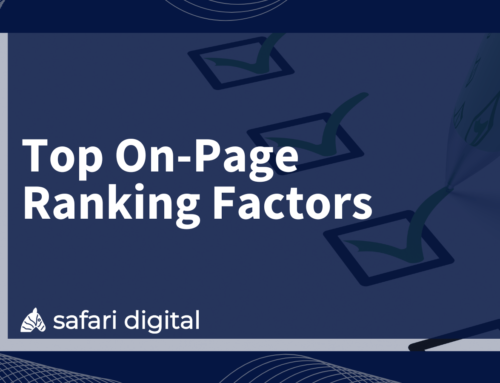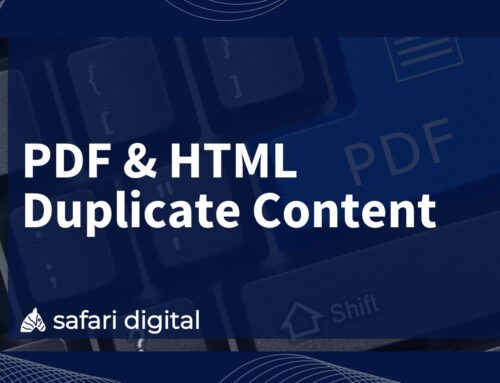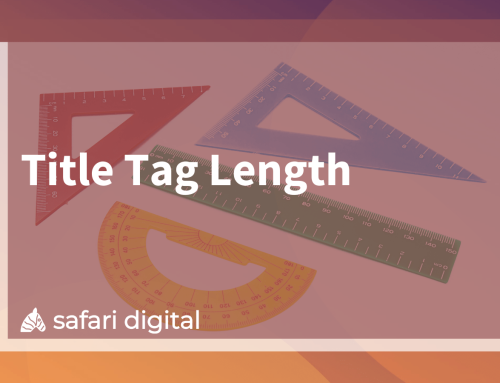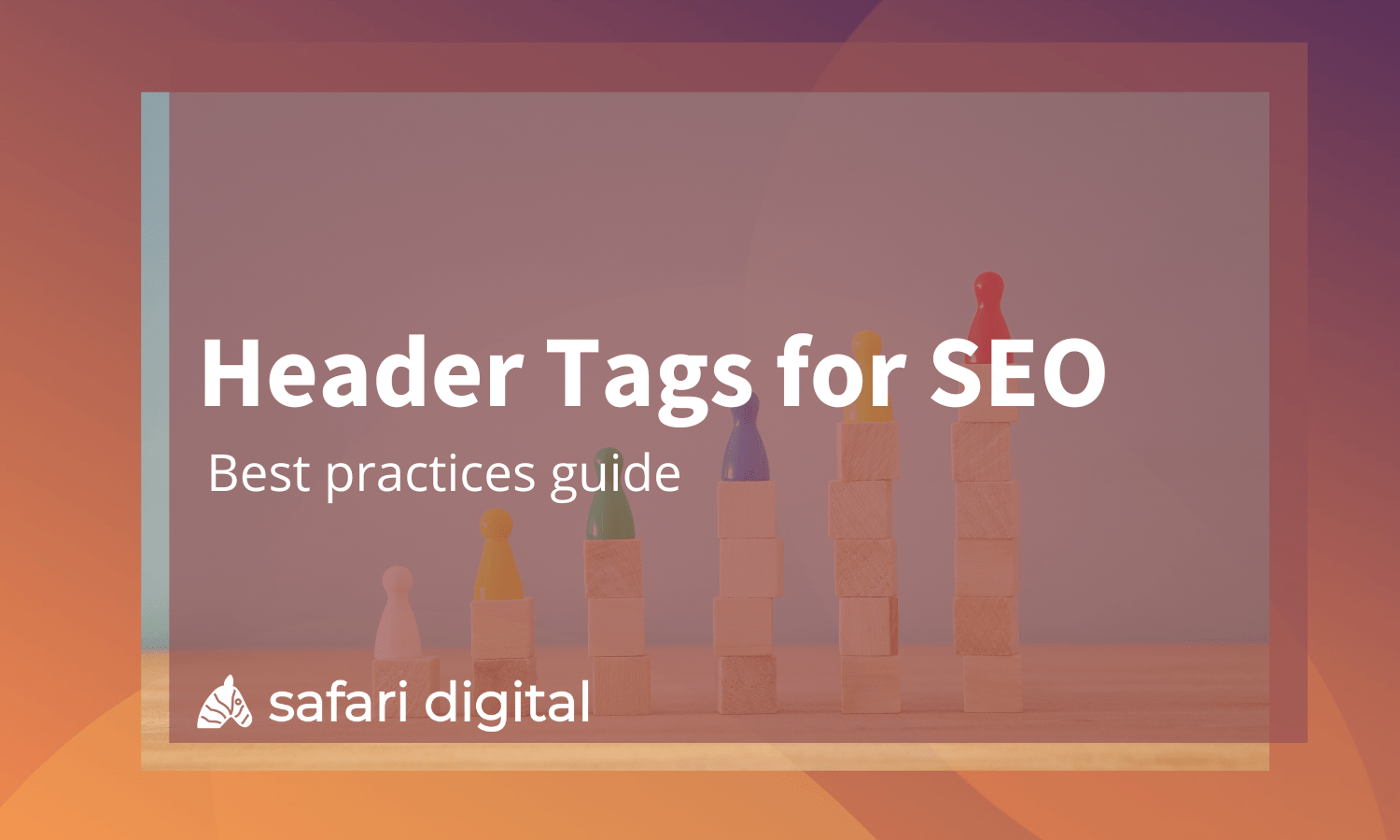
As the SEO landscape continues to evolve with new layers and complexities, understanding the basics is now more important than ever.
Among the most fundamental aspects of on-page SEO is the use of header tags and the role that they play in improving search visibility and content readability for users.
In this comprehensive guide to header tags and SEO, we’ll look at header tags (or H-tags) best practices and provide an actionable framework that you can apply across your on-page content. By the end of this guide, you should be confident in understanding, selecting, and implementing a transferrable header tag structure that optimises your content for user experience and SEO performance.
Table of Contents
1. What are header tags?
2. Why are header tags important?
3. What Google has to say about header tags
4. What are the different header tags?
5. How to know when to use which header tag
6. How many times should I use the different header tags?
7. SEO Best Practices for Header Tags
What are header tags?
Header tags — also known as heading tags or H-tags — are HTML elements that denote headings and subheadings on a webpage. Header tags create order and make your content easier to read and navigate when used correctly.
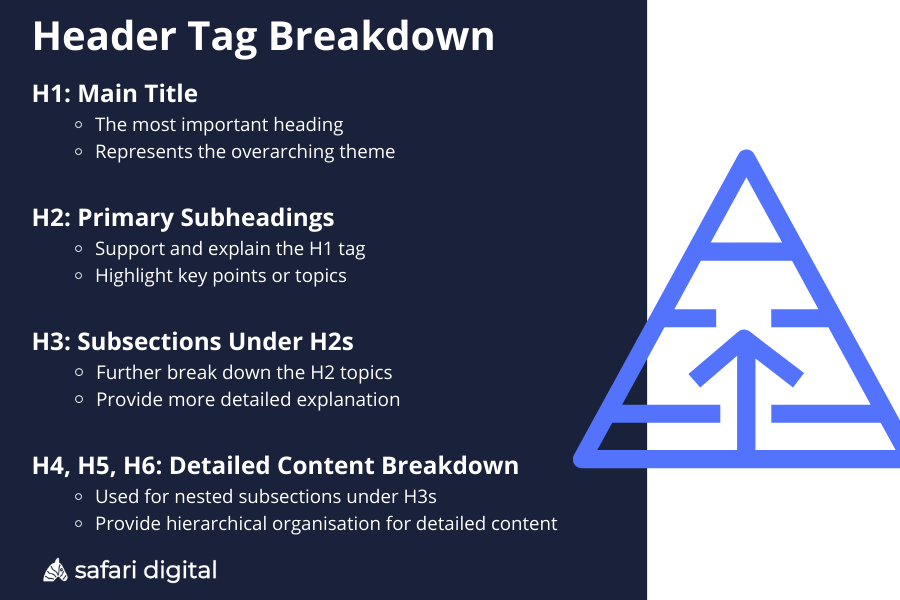
Essentially, you should use the different header tags — ranging from H1 (the most important) to H6 (the least important) — to create a clear hierarchy of the content on your page, making your content clear and readable for users. Header tags also make it easier for search engines to identify the most important content and rank your pages for relevant keywords, so using headers effectively will make your page more SEO-friendly.
Why is header tag SEO important?
Header tags carry importance for publishers, search engine users, and the search engines themselves. Here’s why:
Improved readability: Header tags enhance the structure of your pages, making it easier for users to understand your content and find the information they’re looking for.
Enhanced user experience: Organising your content with appropriate header tags will increase the chances your users will stay on your page and engage with your website, visiting other pages you have to offer.
Stronger SEO: Header tags are proven to help search engines understand the structure and style of your content. Search engines use header tags to determine how relevant your page is to a user’s query — meaning they’re vital to you if you want to climb the rankings to number 1.
Easier edits: not only do well-structured header tags improve the website experience for users and improve your ranking potential for search engines, but they also make editing your content much more straightforward.
Anchor links: anchor links or click to scroll links make it easy for users to find content on a page through a table of contents. H-tags are the element that users are directed to when they click to scroll which makes them an essential step in this process.
What Google has to say about header tags
Google views header tags in the same way that users do. If there is a block of text with a heading above it, Google assumes that the heading relates to the text — just as a user reading the content will, making it easier for both search engines and users to determine how relevant the page is to specific search queries.
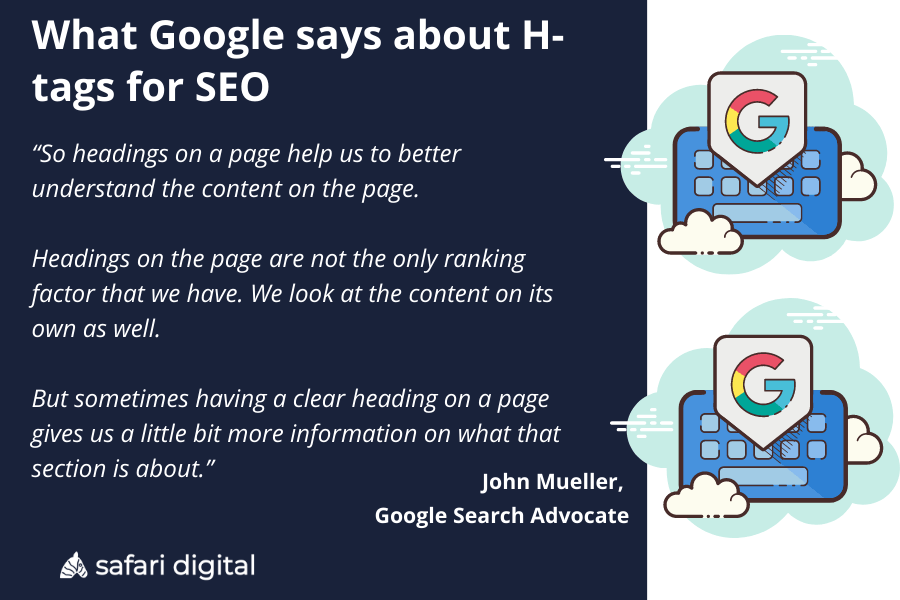
Using your target keywords in header tags is essential, however, there is a fine line to tread to ensure you are not over-optimising or keyword stuffing your header tags. Google Search Advocate John Mueller debunked the belief that using keywords in headings tags automatically boosts your rankings. In a Webmaster hangout, Mueller said:
“So it’s not so much that suddenly your page ranks higher because you have those keywords there. But suddenly it’s more well Google understands my content a little bit better and therefore it can send users who are explicitly looking for my content a little bit more towards my page.”
So, Google’s stance on header tags is that they should be used to make the content on a webpage clearer to search engines and their users. Like us, they believe you shouldn’t overstuff your headers with keywords to rank and instead use your header tags to improve the understanding of your page’s content.
Once upon a time (think early 2000s), header tags were a simple way to signal to search engines exactly what your page should appear for in the SERPs with layers upon layers of keyword stuffing. Now, it’s still important to include your target search terms in headings, however, the main reason to use keywords in headers is for the user experience and to make the intentions of your content more transparent.
What are the different header tags?
H1: The most important header tag is reserved for the main title of your page. It should include your primary keyword and be unique, descriptive, and similar to your meta title tag.
H2: These tags are used for the main subheadings of your written content. They should provide detail explicitly related to your H1 tag. H2s work best when they include the relevant keywords you want to rank for on your page.
H3: H3 tags divide the content under H2 subheadings further. They allow you to give an in-depth exploration of the content contained between H2 tags.
H4: The H4 tag is for any additional content structuring under H3 tags. However, these are less common than previous tags and carry much less SEO weight.
H5: Even less common than H4s, H5 tags are for organising content under H4 tags.
H6: The least commonly used header tags, H6s are for structuring under H5 headings — these are also the least important form of header tag.
Header Tag SEO Best Practices
Different parts of your content call for different header tags. Consider each block of text and the importance of the content within. Splitting big blocks of text into multiple subsections will make your content easier to understand and call attention to the main points in the section. Here is a guide for implementing a cohesive header tag structure on your web pages that makes sense to your readers and to Google’s crawl bots:
- Use an H1 for the main title.
- Use H2s for the primary subheadings.
- Use H3s for subsections under H2s.
- Use H4, H5, and H6 tags to break down detailed content further.
How many times should I use the different header tags?
With header tags, you’ll find there’s no specific number or quota to meet or avoid. The main point of headers is to create a sensible and clear hierarchy. Generally, not using enough header tags can make the content confusing, unclear, or overwhelming, while using too many can dilute their importance. For best results, use one H1 tag per page and multiple H2s and H3s to organise your content. H4, H5, and H6 tags are very much optional but may be helpful in some scenarios.
When it comes to H-tags, there are no hard and fast rules. When in doubt, use a tag that makes it simple for users to skim your content while understanding the main themes and topics throughout.
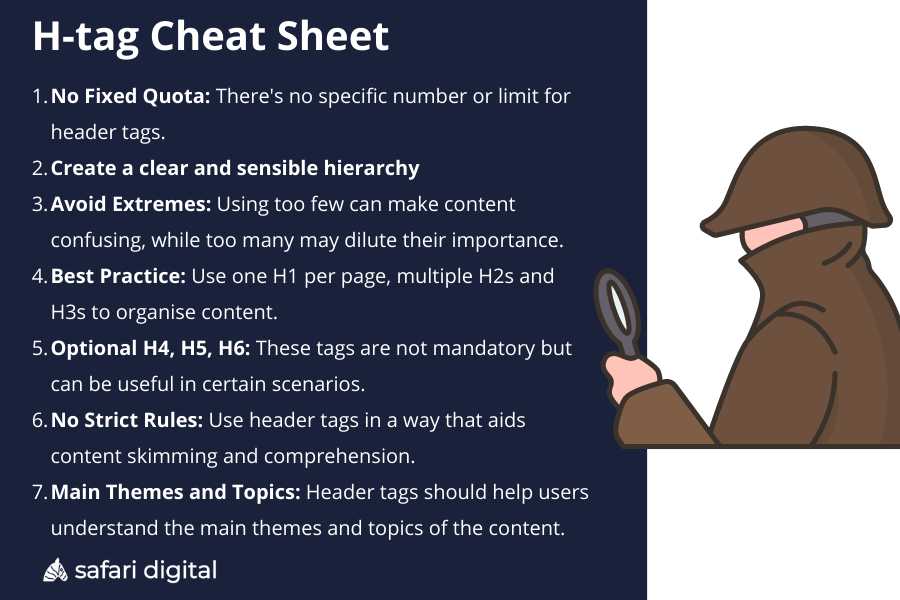
SEO Best Practices for Header Tags
To make the most out of your header tags and strengthen your on-site SEO, consider following these practices:
Establish a clear hierarchy: Start with an H1 tag for the main title, followed by H2 tags for subheadings, and continue with H3, H4, H5, and H6 tags for subsequent levels of subheadings. Using a clear and accessible hierarchy helps search engines and users understand the structure and importance of your content.
Limit H1 tags to one per page: Whether we are writing content internally or advising our clients, we recommend that H1 tags should be reserved for the page’s main title, as it signals the primary focus of the content to search engines. While there is no strict rule about using multiple H1 tags, it is generally recommended that you use one H1 heading tag (as there is usually only one main topic discussed per webpage) and use H2 and H3 tags to delegate the rest of the content under your H1.
Include relevant keywords: Strategically place your target keywords within header tags, especially in H1 and H2 tags, to emphasise their importance to search engines. Avoid overstuffing headers with keywords; make sure that those you use flow naturally in each header.
Keep it concise: Ensure header tags are brief and to the point, making it easier for search engines and users to understand the content’s subject. Long headers confuse users and reduce the effectiveness of keywords.
Write for users, not just search engines: Make sure your header tags are informative, engaging, and provide value to readers, rather than just being keyword stuffed. User-friendly headers can lead to higher engagement and, therefore, better rankings.
Use natural language: Avoid over-optimisation by using natural language and variations of your target keywords in header tags — this approach appeals to readers and search engines.
Maintain consistency: Ensure the formatting and style of header tags are consistent across your website for a better user experience and improved crawlability.
Avoid overusing header tags: Excessive use of header tags can dilute their importance, so use them only when necessary. They are best used to structure your content and improve readability.
Test and optimise: Regularly analyse your website’s performance and adjust your header tags to improve your on-page SEO strategy. Monitor your rankings, user engagement, and other metrics to assess the effectiveness of your header tags.
Final thoughts
So then, after digesting all of this information, you’re likely wondering what are some practical steps that you can take to enhance your writing, web page structure, and overall SEO performance with H-tags. Well, perhaps the biggest takeaway should be that guidelines regarding heading tags are not rigid, instead, they require a bit of forward planning and practical judgement to implement them in your text.
Header tags like H1s, H2s, and H3s are essential not just for your readers but for the search engines that interpret the purpose and audience of your content. Ensure that your web pages are well-structured and easily navigated by users and search engines to improve your website’s user experience and search engine performance. It’s also essential to stay up to date with the latest SEO trends and updates from Google and other search engines to make sure you’re using the best header tag practices.



